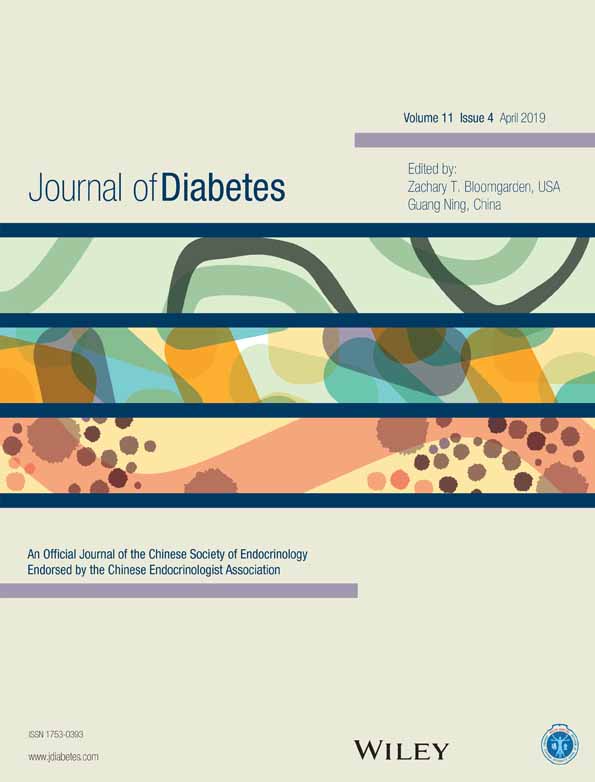Effects of combined treatment with blood flow restriction and low-intensity electrical stimulation on diabetes mellitus-associated muscle atrophy in rats
限制血流与低强度电刺激联合治疗对大鼠糖尿病相关肌肉萎缩的影响
Abstract
enBackground
Diabetes mellitus (DM) results in decreased muscle mass and harmful complications. Blood flow restriction (Bfr) and electrical stimulation (ES) increase muscle protein synthesis. We hypothesized that combined Bfr and low-intensity ES may be more effective in preventing diabetes-associated muscle atrophy by inhibiting the downregulation of protein synthesis-related pathways. In this study, the effects of combined Bfr and low-intensity ES on diabetes-associated muscle atrophy were investigated by evaluating advanced glycation end-products (AGEs) and receptor for AGEs (RAGE) in rats.
Methods
Twenty-four Goto-Kakizaki (GK) rats were randomly divided into four treatment groups: sedentary DM, DM + Bfr (pressure cuffs placed around the thigh), DM + ES, and DM + Bfr + ES. Six Wistar rats were used as an age-matched control. Levels of AGEs and the expression of RAGE, extracellular signal-regulated kinase (ERK), and ribosomal protein S6 (rpS6) were determined in plantaris muscles.
Results
Diabetes resulted in a loss of muscle mass and upregulation of AGEs and RAGE in the plantaris muscle compared with the control group. Treatment with Bfr and ES alone failed to attenuate diabetes-associated loss of muscle mass, and could not prevent the upregulation of AGEs. However, the combination of Bfr and ES prevented the diabetes-associated decrease in muscle mass and upregulation of AGEs. In addition, the combination treatment prevented diabetes-associated decreases in the expression of phosphorylated rpS6.
Conclusions
Combination treatment with Bfr and ES may prevent diabetes-associated muscle atrophy by upregulating inhibition of AGEs, which leads to the activation of protein synthesis.
Abstract
zh摘要
1.1 背景
糖尿病(DM)可导致肌肉含量减少以及有害的并发症。限制血流(blood flow restriction,Bfr)与电刺激(electrical stimulation,ES)可以增加肌肉蛋白质的合成。我们假设联合使用Bfr与低强度ES治疗可通过阻止蛋白合成相关通路的下调, 更有效地预防糖尿病相关肌肉萎缩。在这项研究中, 我们通过评估大鼠晚期糖基化终末产物(advanced glycation end-products,AGEs)与AGEs受体(RAGE),研究联合使用Bfr与低强度ES治疗对糖尿病相关肌肉萎缩的效果。
1.2 方法
24只Goto-Kakizaki(GK)大鼠被随机分为4个治疗组:不活动的DM组,DM+Bfr组(压力袖带放在大腿周围),DM+ES组以及DM+Bfr+ES组。对照组为6只年龄匹配的Wistar大鼠。测定跖肌的AGEs水平与RAGE的表达、细胞外信号调节激酶(signal-regulated kinase,ERK)以及核糖体蛋白S6(ribosomal protein S6,rpS6)。
1.3 结果
与对照组相比, 糖尿病可导致跖肌含量减少并且可上调AGEs与RAGE。单独使用Bfr或者ES治疗并不能减轻糖尿病相关肌肉含量的减少, 也不能防止AGEs的上调。然而, 联合使用Bfr与ES治疗可以防止糖尿病相关肌肉含量的减少以及AGEs的上调。另外, 联合治疗可以防止糖尿病相关的磷酸化rpS6表达下降。
1.4 结论
联合使用Bfr与ES治疗可以通过上调AGEs抑制作用, 防止糖尿病相关的肌肉萎缩, 活化蛋白质合成。




